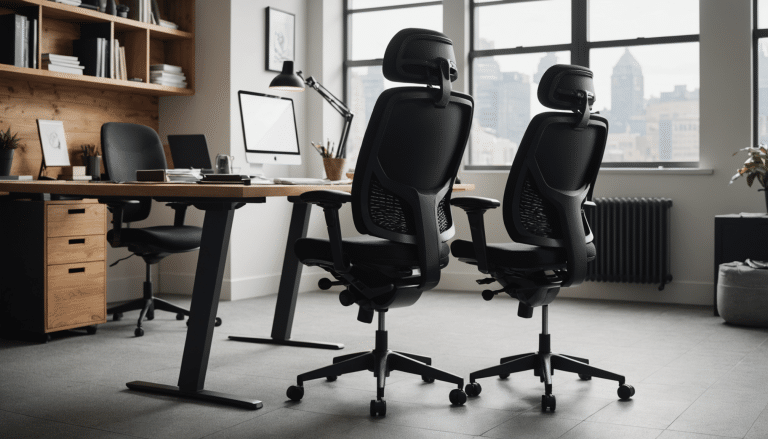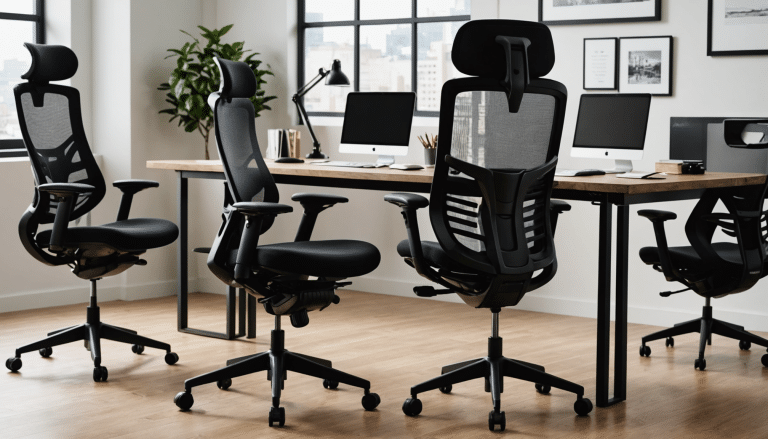Ergonomic Solutions for the Office
Many of us may arrive at our office or sit down to work at home every day without much thought about the effects it has on our health. Although computer desks and chairs are made to offer comfort, ensuring that they’re used ergonomically to help avoid any potential health issues is a vital part of any office setup.
So, what does ergonomic mean? Well, an ergonomic office chair or desk is one that can be adjusted and moved to ensure safe and comfortable use by the intended user. At Viking, we know how important it is that you follow HSE safety guidelines and ensure you’re always safe and healthy when working at your desk, that’s why we have an ergonomic shop to help you with this.
What is an Ergonomic Desk?
An ergonomic desk doesn’t just refer to the actual desk, it accounts for your workspace as a whole. To have an ergonomic desk means having your chair, desk, monitor and other items set up in the safest way possible; this means avoiding potential injury to your back, eyes or anywhere else.
The way that you sit at your desk is one of the most important points to consider when it comes to ergonomic desk setup, and learning how to sit at a desk correctly is vital. This means your desk and chair should be set up at the right height.
What is the Standard Desk Height for Ergonomics?
To be ergonomic, it is generally suggested that a desk sits between 28” and 30” from the ground.
How to Sit Ergonomically at a Desk
For those working in an office, the height of your desk plays an important role in making your workstation ergonomic. Although desks come in a number of different shapes and sizes, to make it ergonomic the height of your desk is the biggest concern.
Desks should ideally meet a few different factors:
- With your feet are flat on the floor, your legs should fit comfortably underneath the desk
- As you sit with your arms on the desk, your elbows should be at roughly a 90-degree angle.
- In general, your desk should sit between 28” and 30” from the ground.
If your desk cannot be adjusted for height, there are steps you can take to make it more ergonomic, these include the use of monitor stands or freestanding desktops.
For those who aren’t comfortable sitting at a desk, you can also consider using a standing desk to briefly move out of your sitting position and take some pressure off your back.
Chair Ergonomic Solutions
Ever found that your legs ache when sitting at a desk? Finding an ergonomic chair is one of the most important factors in setting up an ergonomic workspace. Many of the injuries suffered by office workers are back injuries that occur as a result of incorrect chairs being used, or chairs being set up incorrectly. When it comes to how to sit ergonomically at a desk, there are a few steps you can follow to help ensure your chair is set up correctly.
What Features Will Make a Desk Chair Ergonomic
There are several features to look out for in a desk chair that make them ergonomic, these include:
- Chair Height
Your chair should be set up so that your feet are flat on the floor and your thighs sit roughly parallel to the ground. Your eyes should sit in line with the top of your screen.
- Back Rest
Your chair should have built in controls to change the tilt and lean of the backrest. This will help you take some of the pressure off your spine and lower back.
- Arm Support
Having arm rests on your office chair is incredibly important. This should be adjustable and be able to support the full length of your forearm when you’re typing.
- Seat Depth
Your seat should be deep enough so that you’re fully sat back with your legs and back supported in the curve of the chair.
- Lumbar Support
The curve of the backrest should support the natural curvature of your spine when sitting in your chair.
When sat at your desk in your office chair, you should look somewhat like the image below, this means with a straight back and a slight 90 degree bend in your knees and elbows.
Best Office Chair for Carpal Tunnel
If you suffer from carpal tunnel syndrome, which is pressure of a nerve or nerves in the wrist, setting up your desk may place increased importance on this. However, this doesn’t just rely on the office chair, it must be a combination of office chair and desk.
Carpal tunnel can be caused by excessive wrist movements, particularly if the wrist is in a bent position. To help avoid this you should ensure that you have an office chair with arms that fully support your forearms and wrists, enabling you to keep your hand in a slightly raised position when typing. This will help to take the pressure off the median nerve that causes carpal tunnel.
Carpal Tunnel Ergonomic Solutions
Aside from adjusting your desk and office chair, you could also try some of the following solutions to ease any discomfort:
- Use a keyboard wrist rest
- Take frequent breaks from your desk
- Ensure you don’t grip tools such as your mouse too tightly, increasing pressure
Having your workspace set up to be ergonomic is something that everyone should be doing in this day and age. Wellness in the workplace is a primary concern for employers and employees alike and desk ergonomics form a big part of this.







